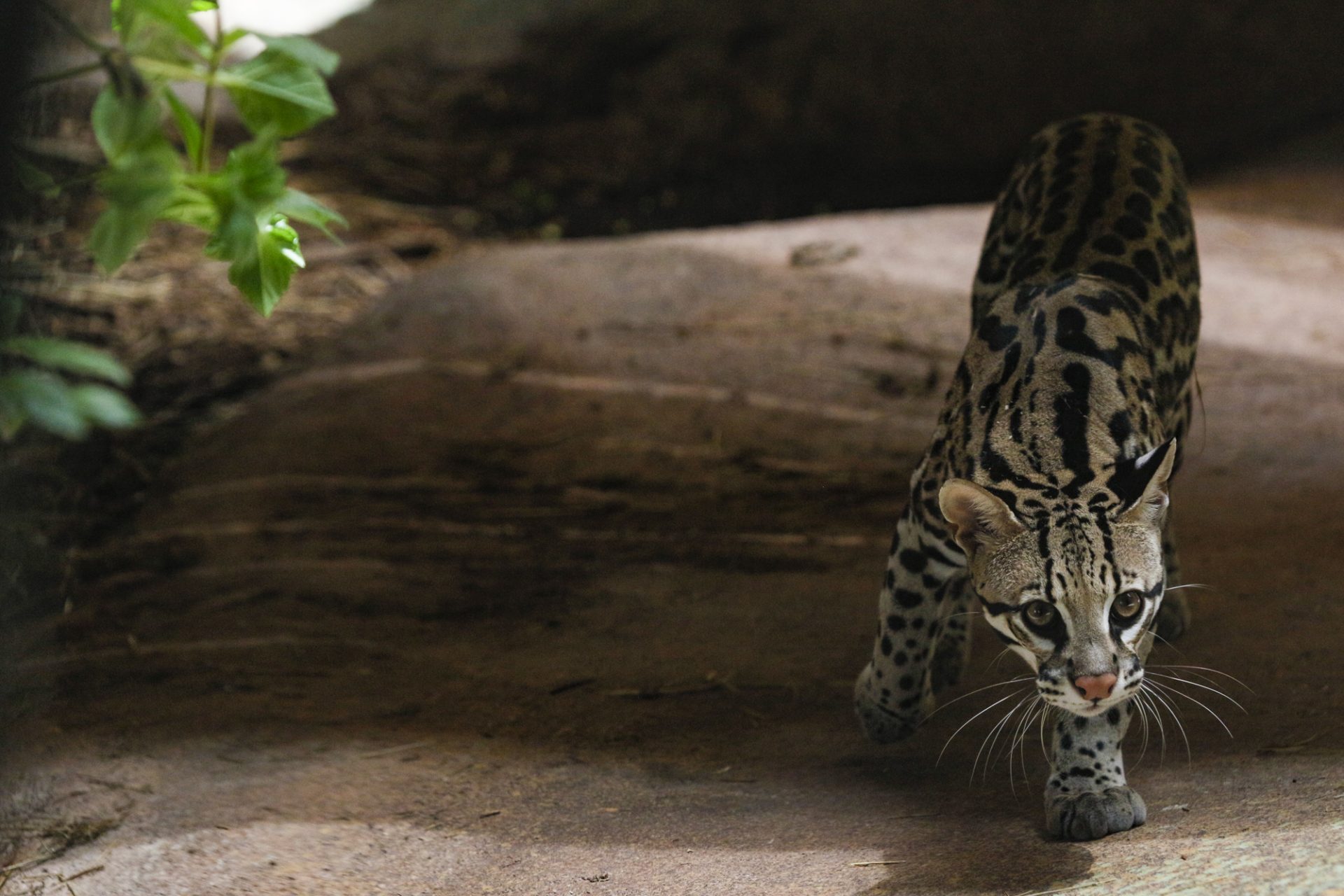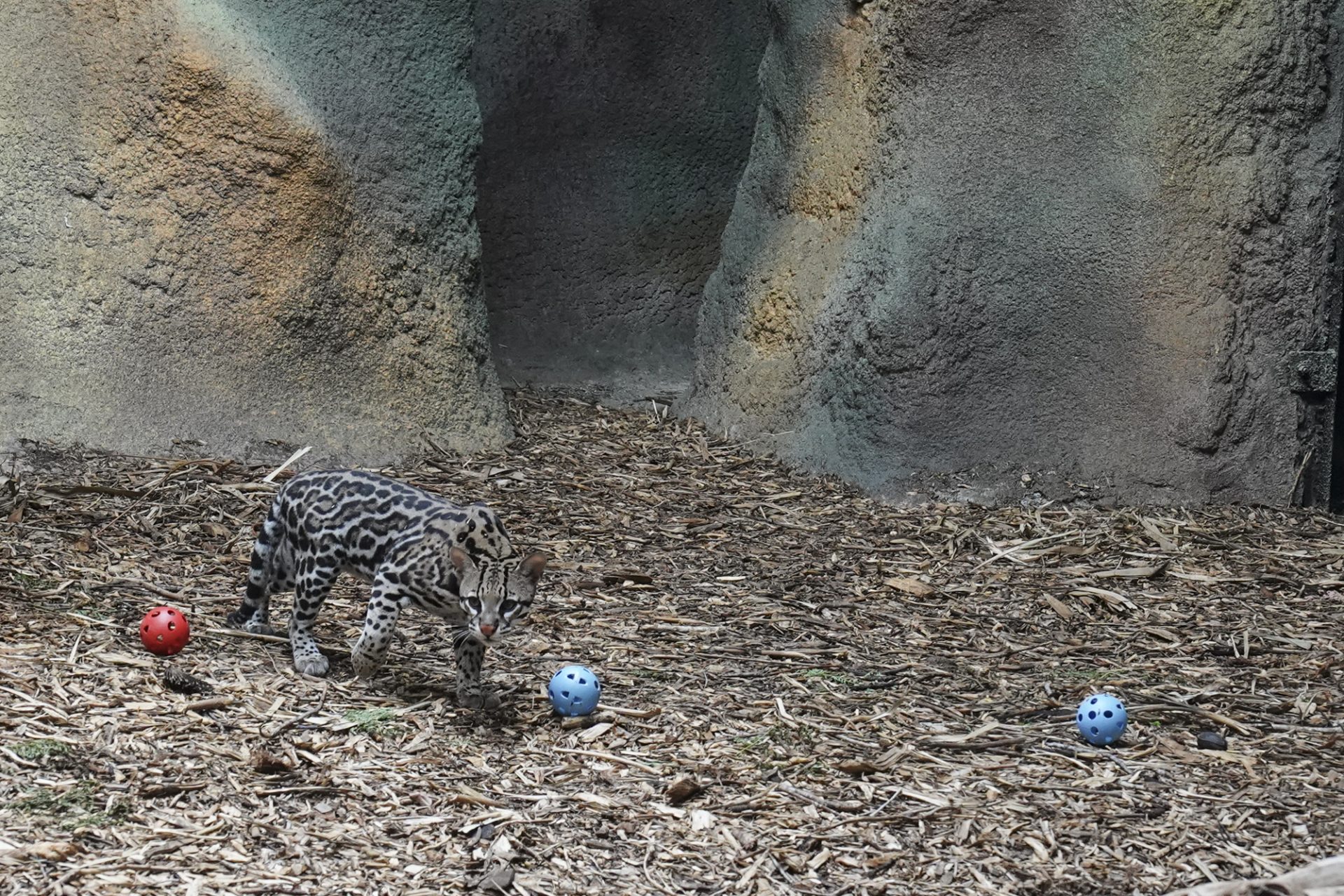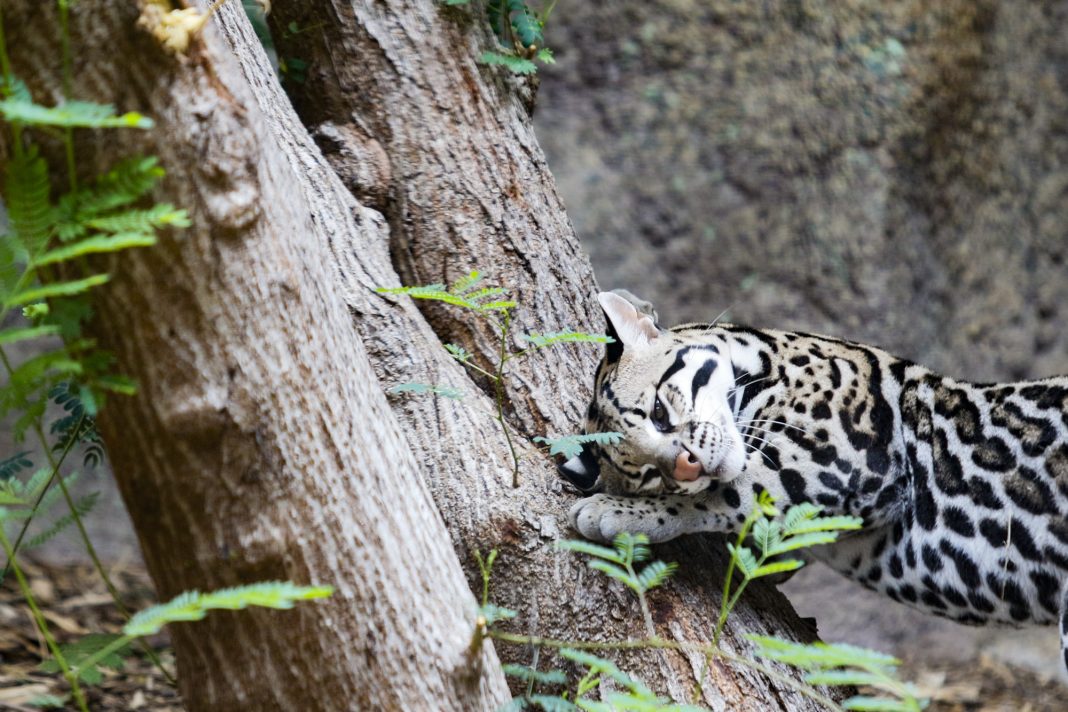The elusive ocelot, endangered on this side of the border, is a celebrity among Rio Grande Grande Valley wildlife, though Brownsville’s Gladys Porter Zoo hasn’t had one — until now.
Leelou, a petite female ocelot nearly 3 years old, and with whiskers that won’t quit, arrived here two months ago from the Texas State Aquarium. It was an opportunity the zoo, which has conservation squarely in its mission, had long been waiting for, according to Walter Dupree, Gladys Porter’s mammal curator.
“We’ve always wanted ocelots,” he said. “We just didn’t have the right facility or holding for them. The Texas State Aquarium called us and they had this female. … We decided we would like to have her here so we could start our ocelot program. We’re going to start a breeding program with her.”
Working with the U.S. Fish and Wildlife Service, the plan is to breed her through artificial insemination or, even better, naturally, which entails finding Leelou a boyfriend, Dupree said. USFW might have a rehabilitated male, or a surplus male could become available from one of the AZA (Association of Zoos & Aquariums) zoos Gladys Porter works with through AZA’s cooperatively managed Species Survival Plan Program, he said, noting that Leelou is close to breeding age.

Ocelots once ranged throughout the Southwest and even into Louisiana, Oklahoma and Arkansas, though only an estimated 60 to 80 survive today in South Texas. The cat disappeared from the rest of its former range, mainly the result of hunting but also habitat loss, though conservation efforts are helping the animals hold on in South Texas, Dupree said.
“We’re lucky we’ve got some of the private ranchers that are working with us,” he said. “The private ranchers have really been a big help for us.”
USFW is also helping through the agency’s conservation efforts at Laguna Atascosa National Wildlife Refuge, Dupree said, adding that future opportunities may exist to significantly boost the ocelot’s numbers here.
“There is some other habitat that we’re not using right now,” he said. “Maybe we can go from the numbers that we have now to almost 1,000 and really reestablish the group again. There were some river areas that they used to be in … that they could conceivably be reintroduced to.”
Leelou currently resides in the exhibit and holding space formerly occupied by the zoo’s serval cats, which were lost to old age, Dupree said. Down the road, Leelou and any other ocelots the zoo acquires will have a new, permanent habitat once phase two of the El Mundo Huasteco y Totonaco exhibit is built, he said
“It’s going to be nice,” Dupree said. “It’s going to more than just ocelots. We’ll have some primates over there and some sloths and maybe a couple of other things, though it’s primarily to show off the ocelots.”
The expanded exhibit will feature two segments connected by a sky bridge — like Gladys Porter’s black-and-white colobus monkey exhibit — that the cats can use to get from one place to another, or to lounge and observe passersby below, he said.
“We don’t have a time frame on it but it should be sometime soon,” Dupree said.
Jamie Delk, who works directly with the zoo’s cats as curator of gorillas and carnivores, said Leelou and zoo staff are still getting to know each other and that she’s still a little shy. Her favorite things are “mice, stinky perfume and catnip,” which handlers use to draw the ocelot out of her holding into the exhibit area, Delk said. A new elevated wooden platform has been constructed, since that’s the kind of thing cats like.
“She goes out mainly in the afternoon,” she said. “Sometimes first thing in the morning, but mainly in the afternoon she will wander to her habitat. She likes to lay right underneath her structure by her water dish.”

A challenge with ocelots is that they’re nocturnal, or active at night, when nobody is at the zoo to see them, Delk said.
“It’s always a battle to get them to go to sleep when we want them to go to sleep,” she said. “They don’t always choose what we want them to choose.”
Delk reiterated that afternoon is the best time to see Leelou, since that’s when she’s most likely to be viewable. The cat is in line for training though she already knows how to sit, stand, hop on a scale and enter a crate on command, she said.
“Once she kind of opens up to us and gets used to us she’s going to be a really nice cat to train, and hopefully we can do some of those training demonstrations while she’s in her habitat so people can see how they smart they are,” Delk said.
“We’re going to make sure she’s comfortable in her new home, but hopefully every year on Day of the Ocelot (March 8) we’ll be able to do something that highlights her and gets her out doing some enrichment stuff, so that people can really see and appreciate ocelots.”
It’s all about getting people attached to Leelou, since those same people are likely to become attached to ocelots in general, and most important, the idea of conserving them. Delk said Leelou, who is small and “really pretty,” should be a big draw and a great asset to the zoo.
“Absolutely, especially since this is an animal that we can find in our own backyard and our own habitat,” she said. “I think it’s wonderful for people to be able to get a close-up view of them.”





